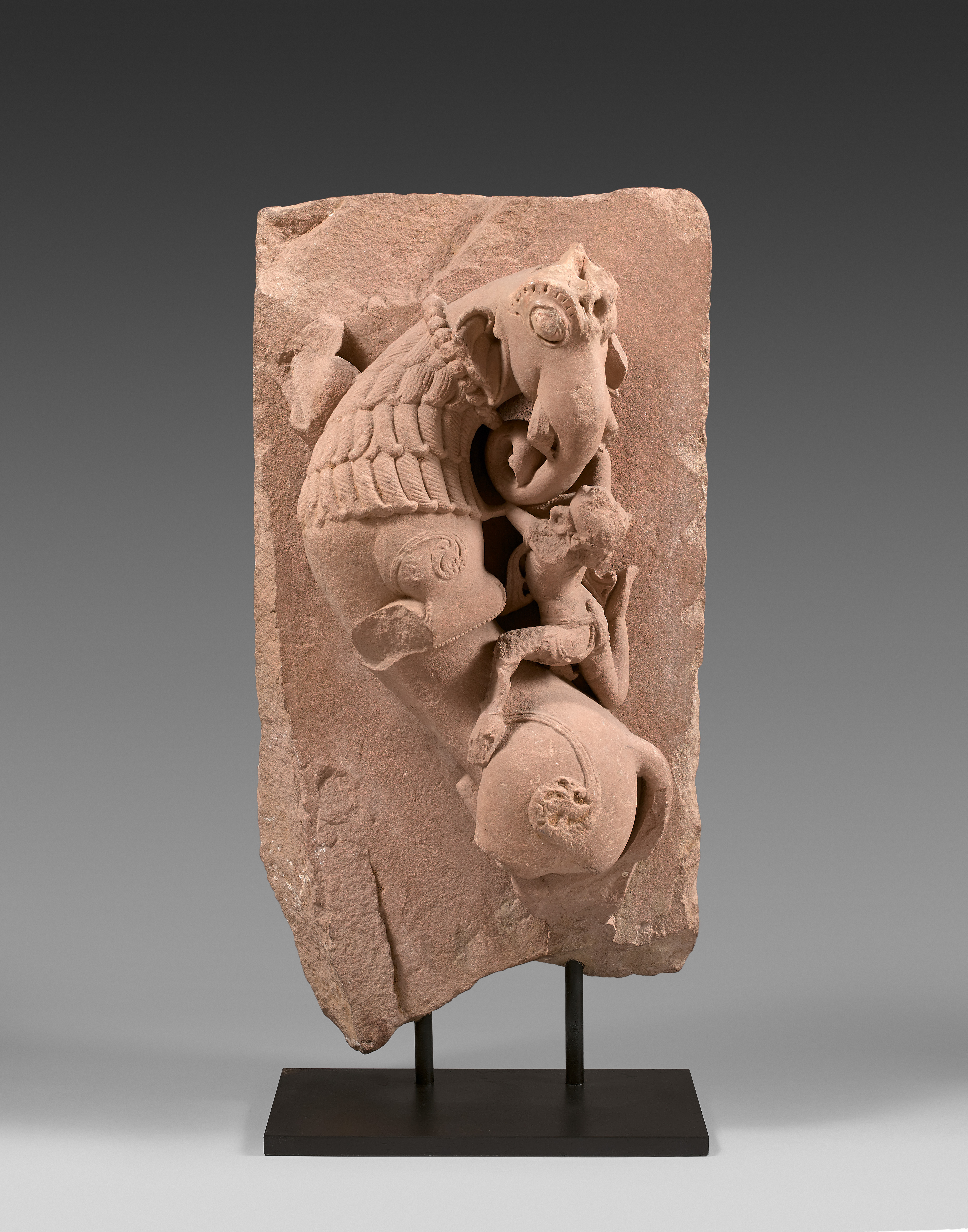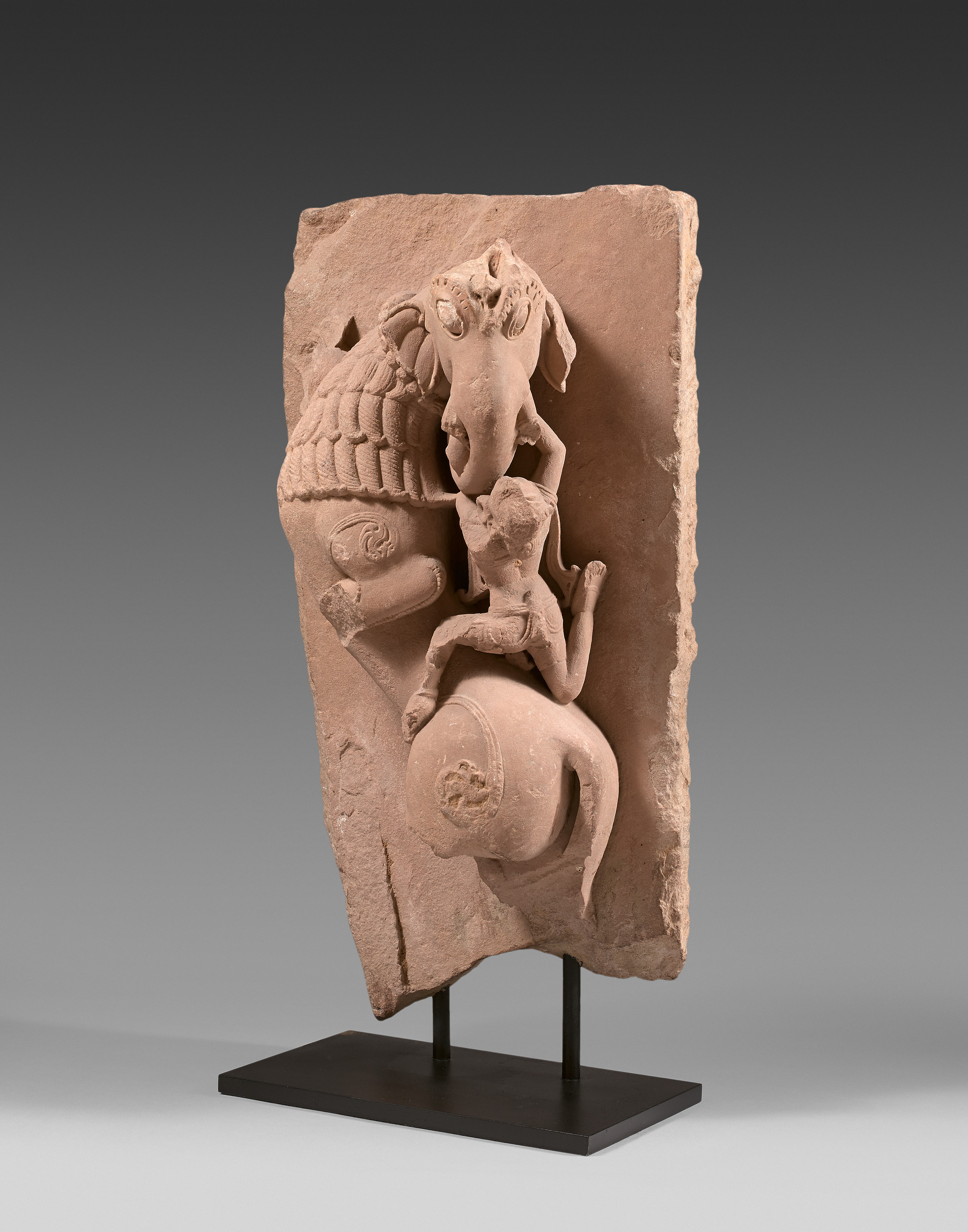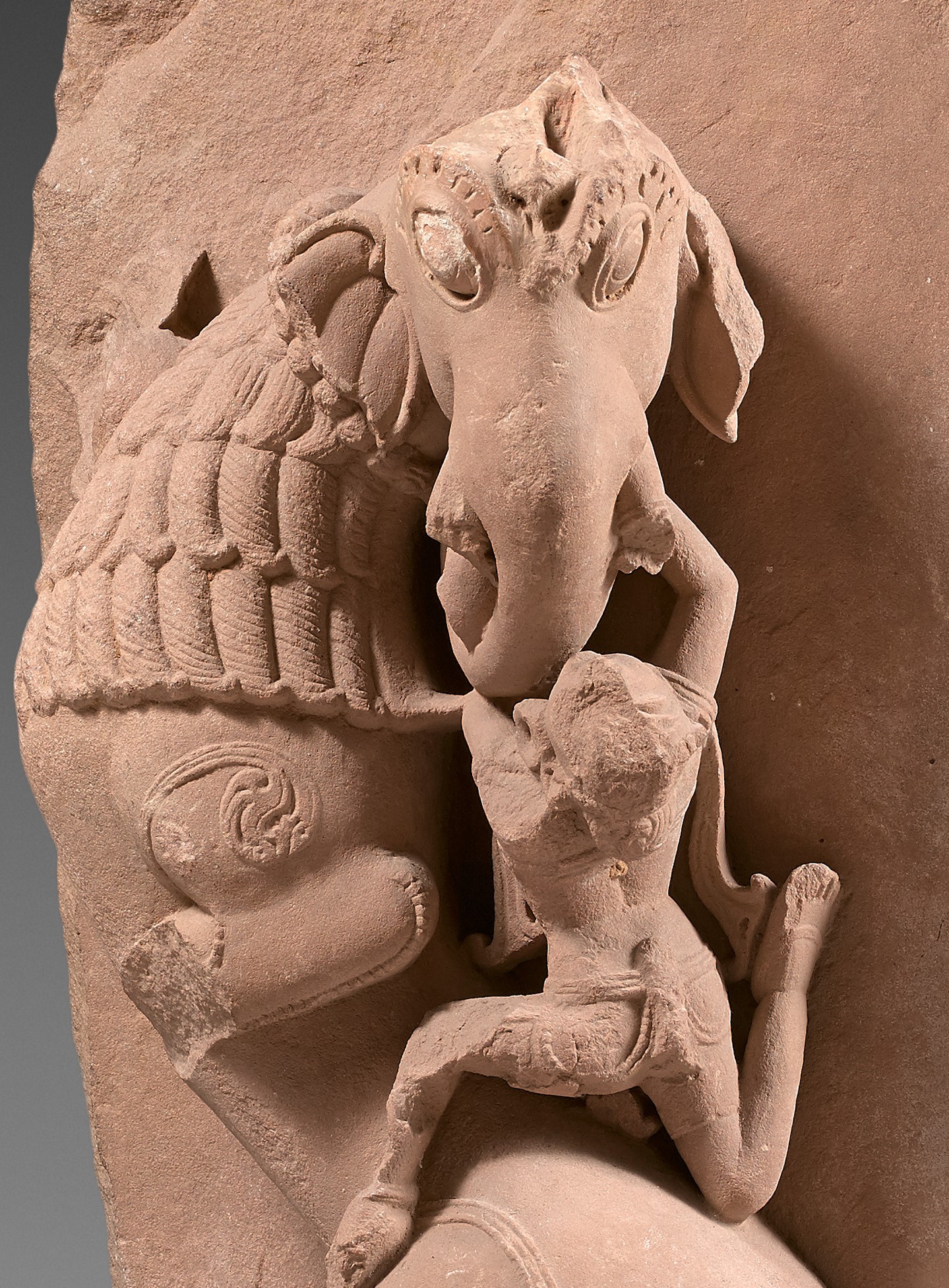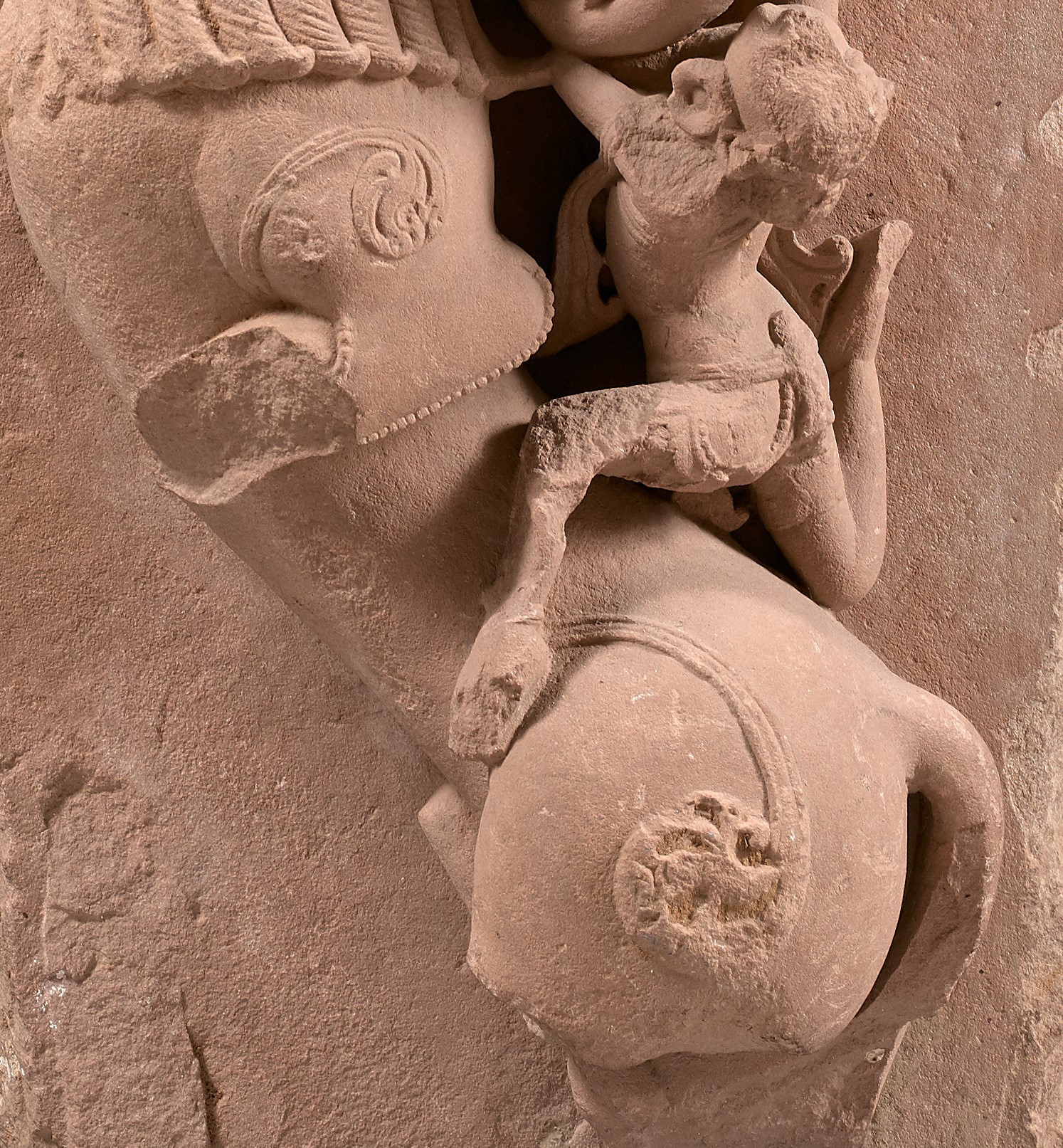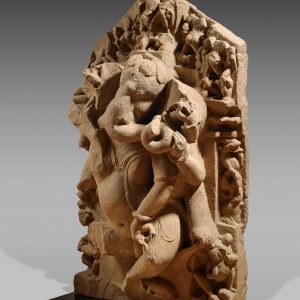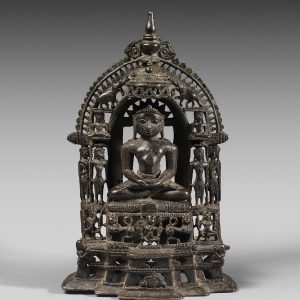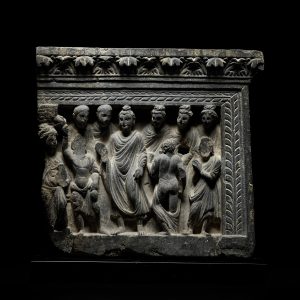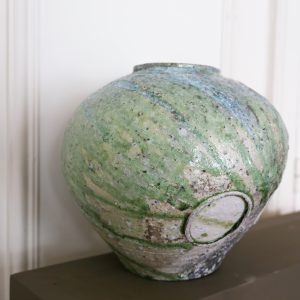Vyāla
Sandstone
Northern India
11th-12th century
H. 59 cm or 23 ¼ in
Description
This fabulous vyāla made of sandstone is a mythical animal omnipresent in Indian art and is getting all our attention this week. Similar to the dynamism of Khajurāho’s leogryphs, we date it from the 11th-12th century. Measuring 59 cm high in total (23 ¼ in), the work is impressive.
The vyāla is a clawed beast, a sort of chimera, borrowing features from different animals. Represented here in a rampant pose, proudly bent, we recognize the body of a lion whose curled tail tip appears on the thigh, as well as its skillfully worked chest with a large flowing mane. Its head is that of an elephant, easily identifiable by its trunk and tusks. Using the makara pattern, this shape is rare and very original.
The depiction of the small, slim and androgynous figure on the back of the vyāla evokes a fight and refers to a popular theme found several times at Khajurāho. As Gilles Béguin writes in his study of the site, this probably alludes to an unknown legend, a local tradition reporting that princes of the Candella family were expected to kill a lion in their sixteenth year.
Carved in high relief on a solid background, this piece combines subtle composition, elegant and flowing curves, strength of the animal and a realistic sense of movement. It shows a captured moment to the viewer, with this dynamic and sophisticated twist. The high quality of the openings, the carving of the mane, the care and originality of the treatment of the tufts of hair in foliage are all remarkable.
Provenance: Private collection, UK, acquired from Simon Ray in London.

